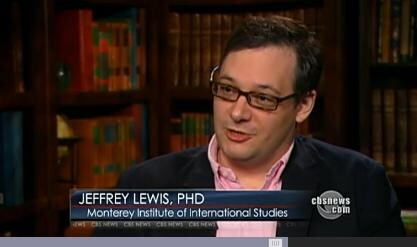hankyoreh
Links to other country sites 다른 나라 사이트 링크
US expert says THAAD can’t intercept North Korea’s SLBM

North Korea’s submarine-launched ballistic missile (SLBM, called the KN-11) cannot be stopped by the THAAD missile defense system, and seeking a diplomatic solution will ultimately be preferable to inciting an arms race, one American expert contends.
“THAAD has a forward-looking radar with a 120-degree field of view. In the case of a single THAAD battery, North Korea’s submarines would not have to travel very far out to sea to attack the THAAD system,” wrote Jeffrey Lewis, director of the East Asia Nonproliferation Program (EANP) at the James Martin Center for Nonproliferation Studies, on his blog on Aug. 28.
North Korea could evade the THAAD radar’s field of view and attack from the rear, Lewis explained.
“One obvious implication of this map is that South Korea needs two THAAD batteries to better cover ocean approaches. That is an obvious solution to at least part of the problem posed by the KN-11,” Lewis said.
But even if two THAAD batteries are deployed, Lewis said, THAAD would have hardly any chance of blocking “lofted attacks [by the KN-11], which could be launched from the waters near North Korea’s naval bases — or from North Korea itself if a land-based variant is deployed.”
The SLBM that North Korea fired on Aug. 24 traveled for about 500 km even though its angle of launch was close to 90 degrees.
“Lofting a long-range missile results in reentry at very high speeds and at a very severe angle,” Lewis wrote.
While noting that THAAD “in theory should have some capability to intercept intermediate-range missiles,” he added that it “has never been tested against an intermediate-range target, let alone on such an unusual angle of attack.”
Lewis expressed his concern that North Korea could gain flexibility in its use of its missile assets if it deployed the KN-11, which uses solid propellant, on land. Solid-fuel missiles like the KN-11 can be prepared for launch in less time than liquid-fuel missiles.
“There are too many countermeasures available to North Korea [to] defeat missile defenses,” Lewis said. “Deploying defenses and precision-strike capabilities will intensify the arms race rather than provide an escape from it.”
“Our best option, unpalatable as it may be, involves finding ways to discourage North Korea from developing new capabilities,” Lewis wrote.
By Yi Yong-in, Washington correspondent
Please direct questions or comments to [english@hani.co.kr]

Editorial・opinion
![[Column] Park Geun-hye déjà vu in Yoon Suk-yeol [Column] Park Geun-hye déjà vu in Yoon Suk-yeol](https://flexible.img.hani.co.kr/flexible/normal/500/300/imgdb/original/2024/0424/651713945113788.jpg) [Column] Park Geun-hye déjà vu in Yoon Suk-yeol
[Column] Park Geun-hye déjà vu in Yoon Suk-yeol![[Editorial] New weight of N. Korea’s nuclear threats makes dialogue all the more urgent [Editorial] New weight of N. Korea’s nuclear threats makes dialogue all the more urgent](https://flexible.img.hani.co.kr/flexible/normal/500/300/imgdb/original/2024/0424/7317139454662664.jpg) [Editorial] New weight of N. Korea’s nuclear threats makes dialogue all the more urgent
[Editorial] New weight of N. Korea’s nuclear threats makes dialogue all the more urgent- [Guest essay] The real reason Korea’s new right wants to dub Rhee a founding father
- [Column] ‘Choson’: Is it time we start referring to N. Korea in its own terms?
- [Editorial] Japan’s rewriting of history with Korea has gone too far
- [Column] The president’s questionable capacity for dialogue
- [Column] Are chaebol firms just pizza pies for families to divvy up as they please?
- [Column] Has Korea, too, crossed the Rubicon on China?
- [Correspondent’s column] In Japan’s alliance with US, echoes of its past alliances with UK
- [Editorial] Does Yoon think the Korean public is wrong?
Most viewed articles
- 1‘We must say no’: Seoul defense chief on Korean, USFK involvement in hypothetical Taiwan crisis
- 2Will NewJeans end up collateral damage in internal feud at K-pop juggernaut Hybe?
- 3[Column] Park Geun-hye déjà vu in Yoon Suk-yeol
- 4Why Korea shouldn’t welcome Japan’s newly beefed up defense cooperation with US
- 5Thursday to mark start of resignations by senior doctors amid standoff with government
- 6N. Korean hackers breached 10 defense contractors in South for months, police say
- 7[Guest essay] The real reason Korea’s new right wants to dub Rhee a founding father
- 8[Column] ‘Choson’: Is it time we start referring to N. Korea in its own terms?
- 9Kim Jong-un expressed ‘satisfaction’ with nuclear counterstrike drill directed at South
- 10[Editorial] New weight of N. Korea’s nuclear threats makes dialogue all the more urgent